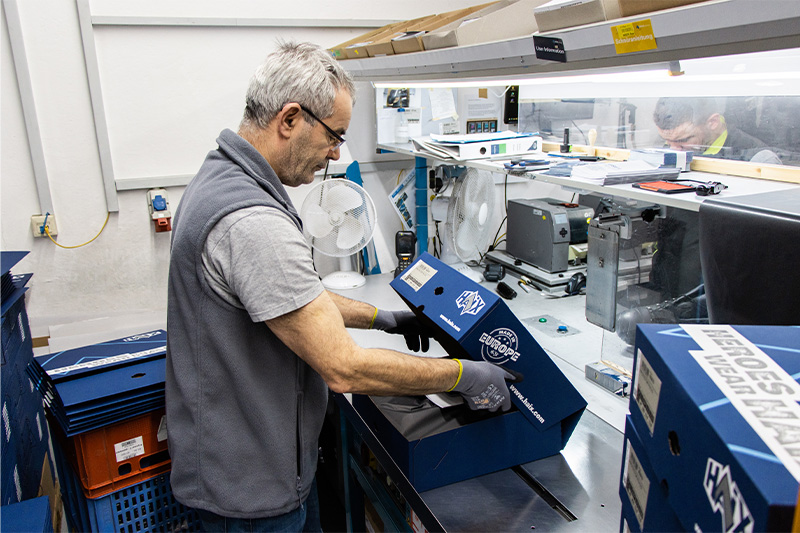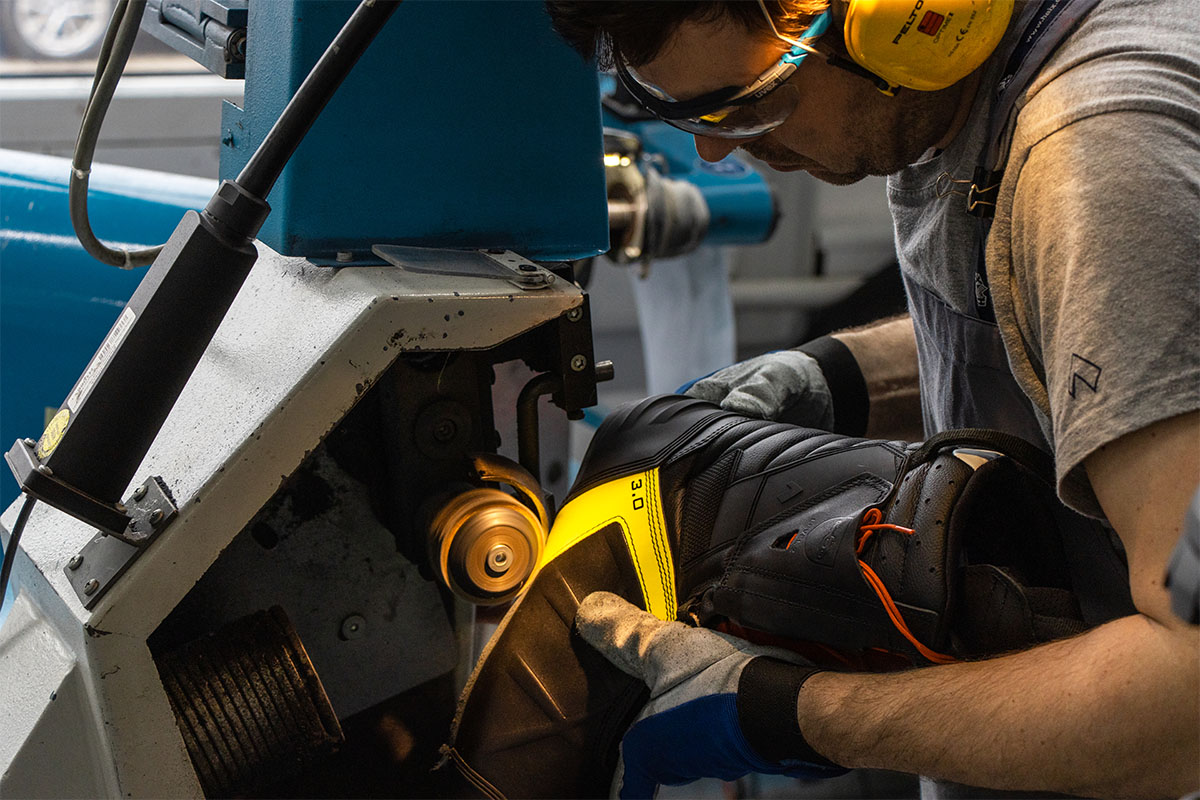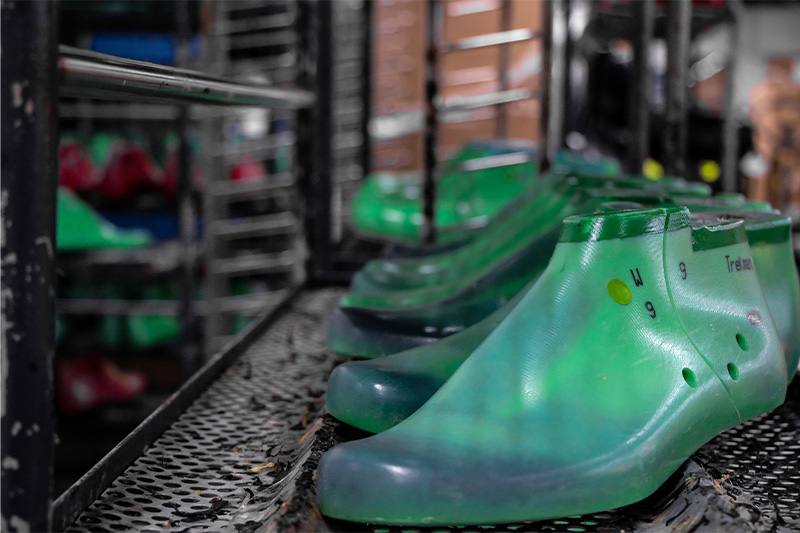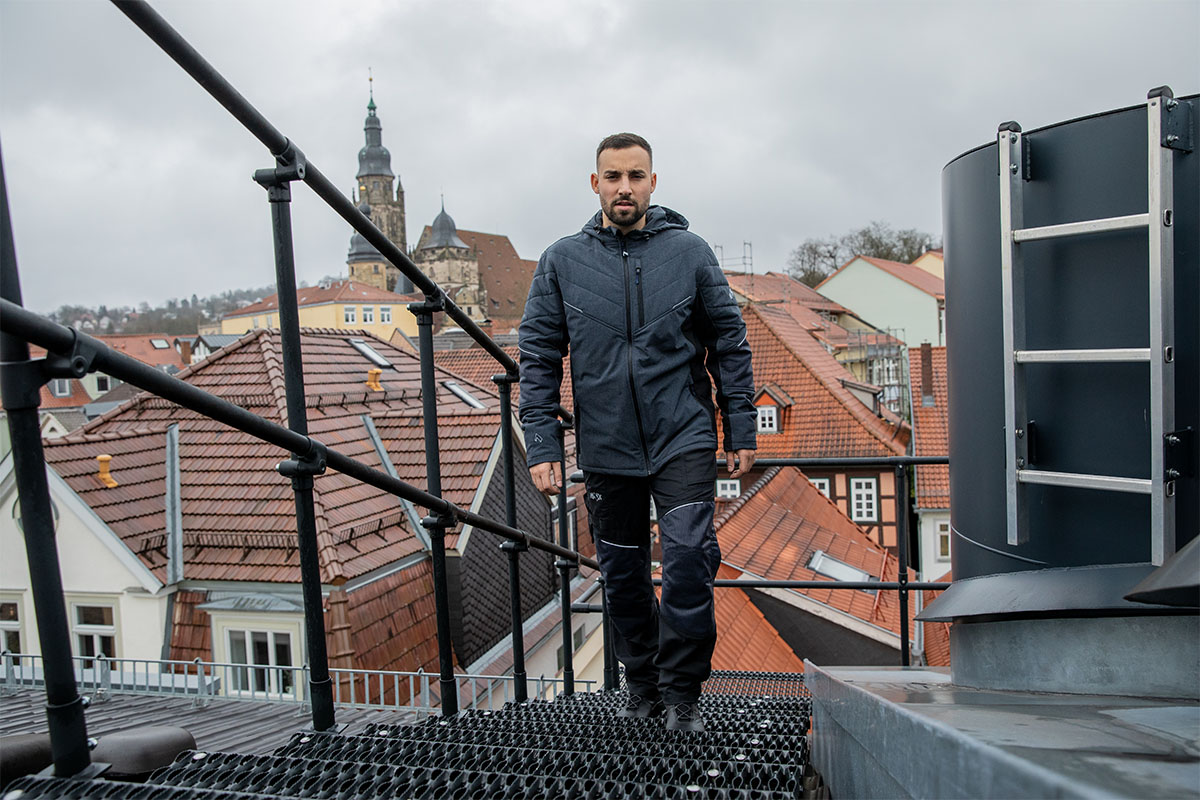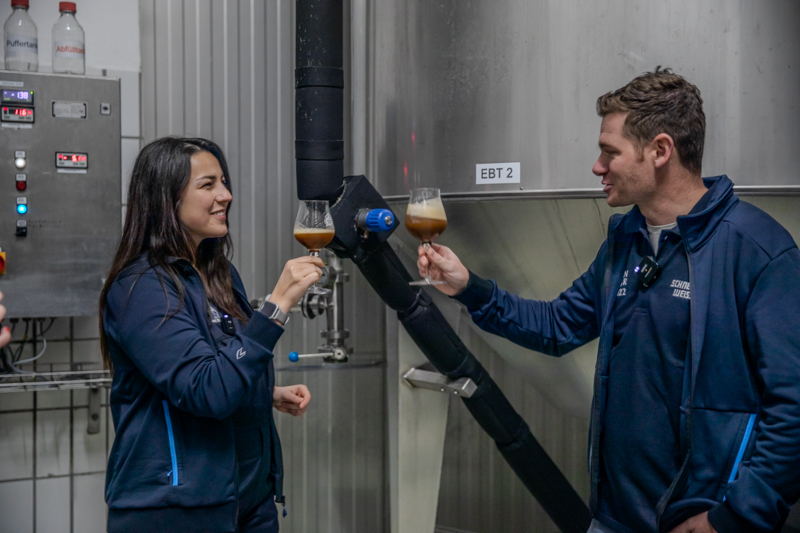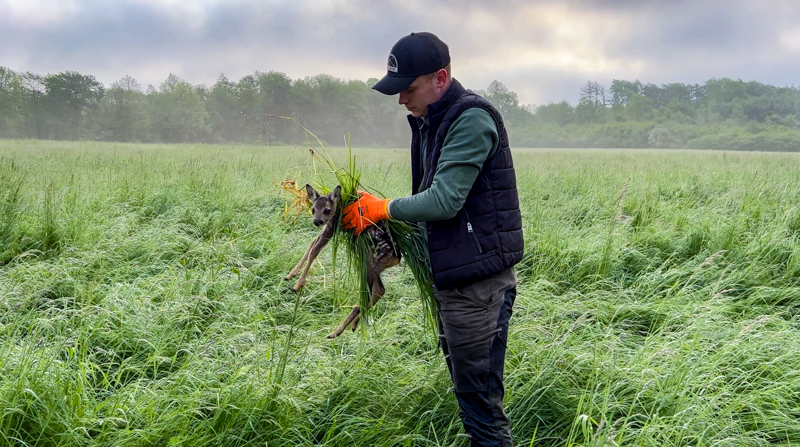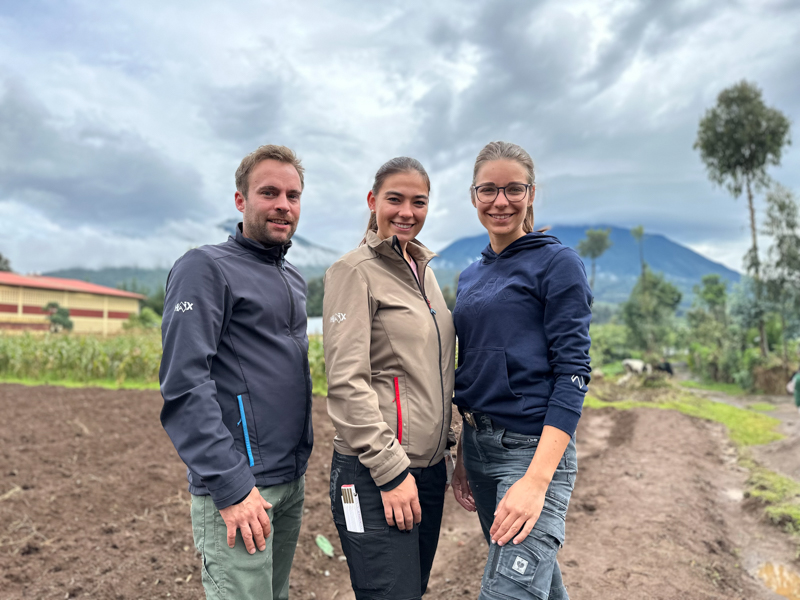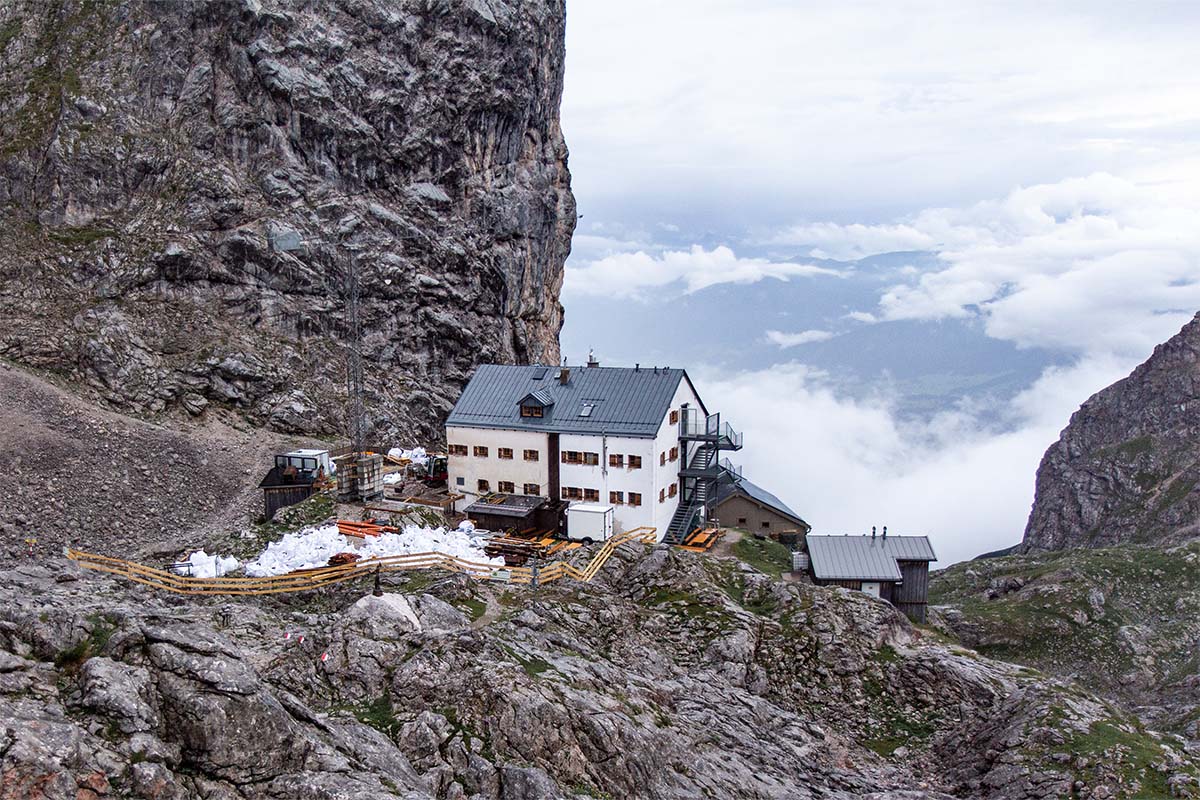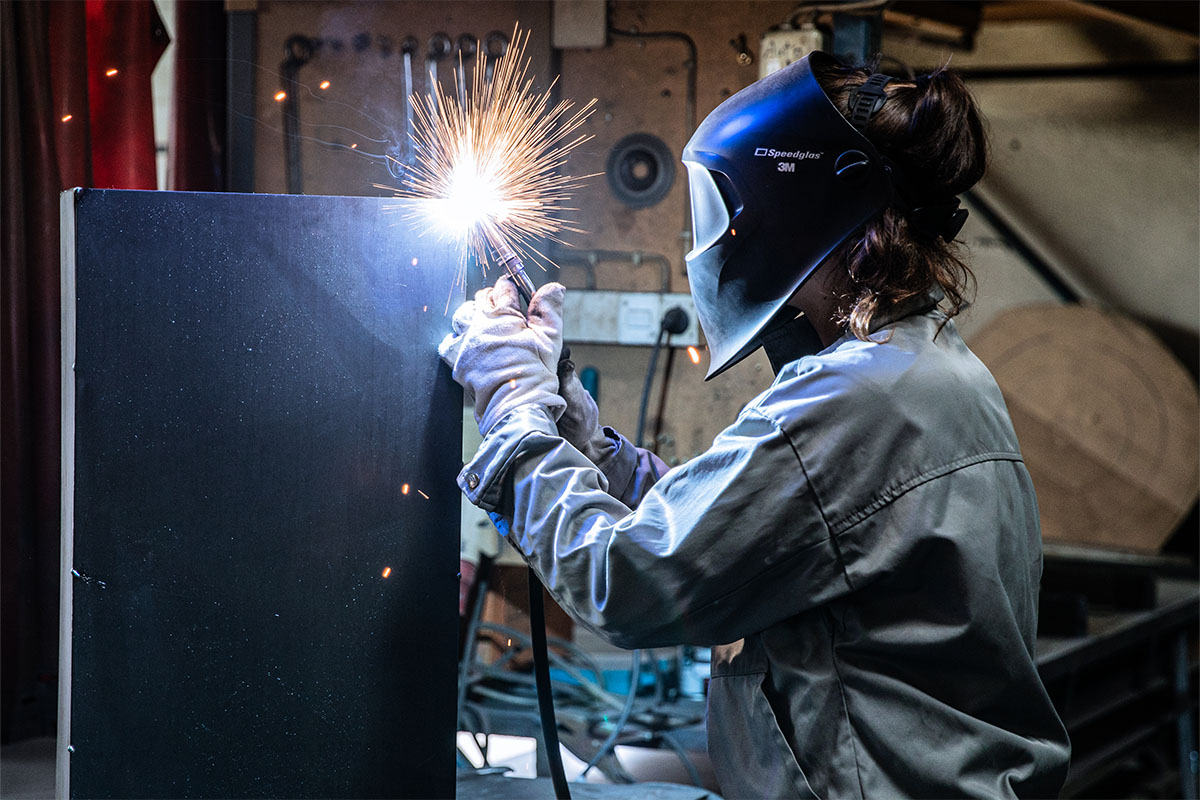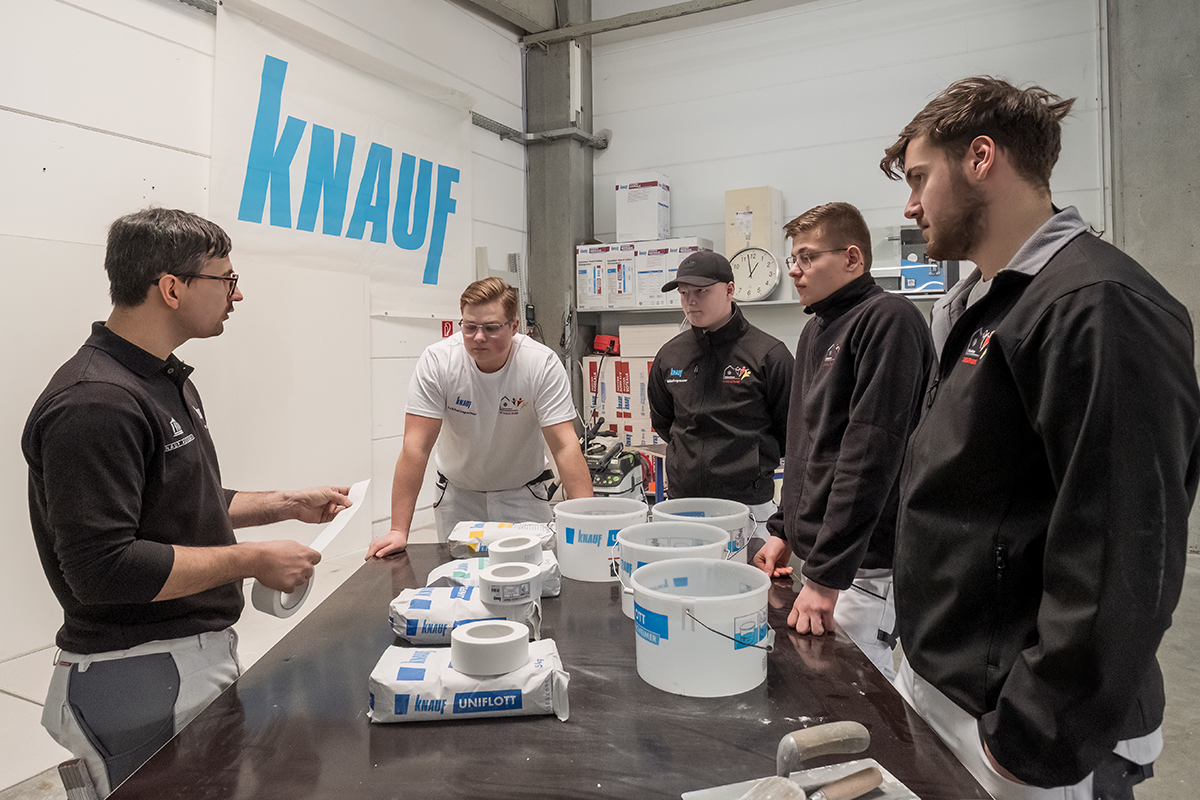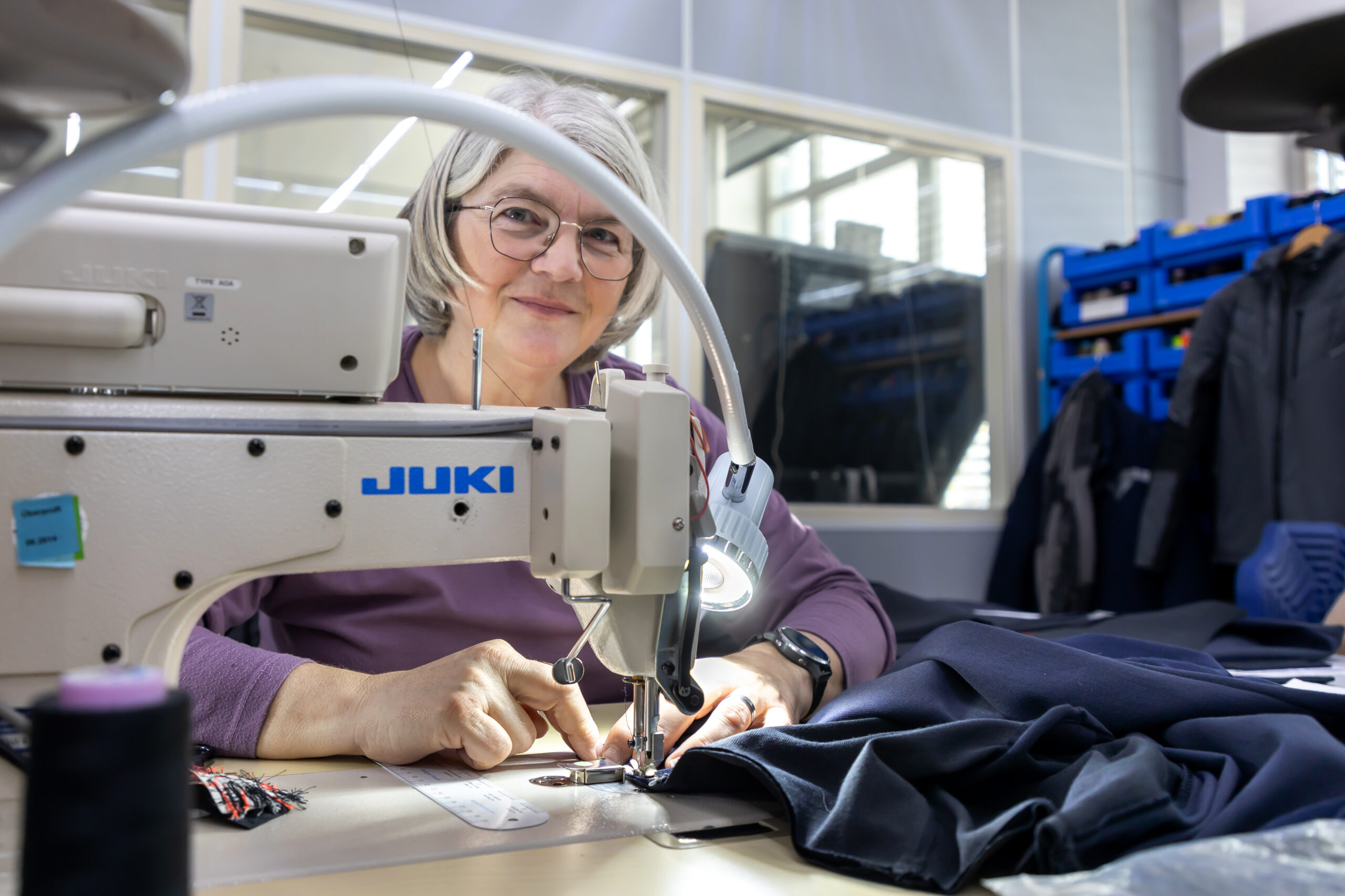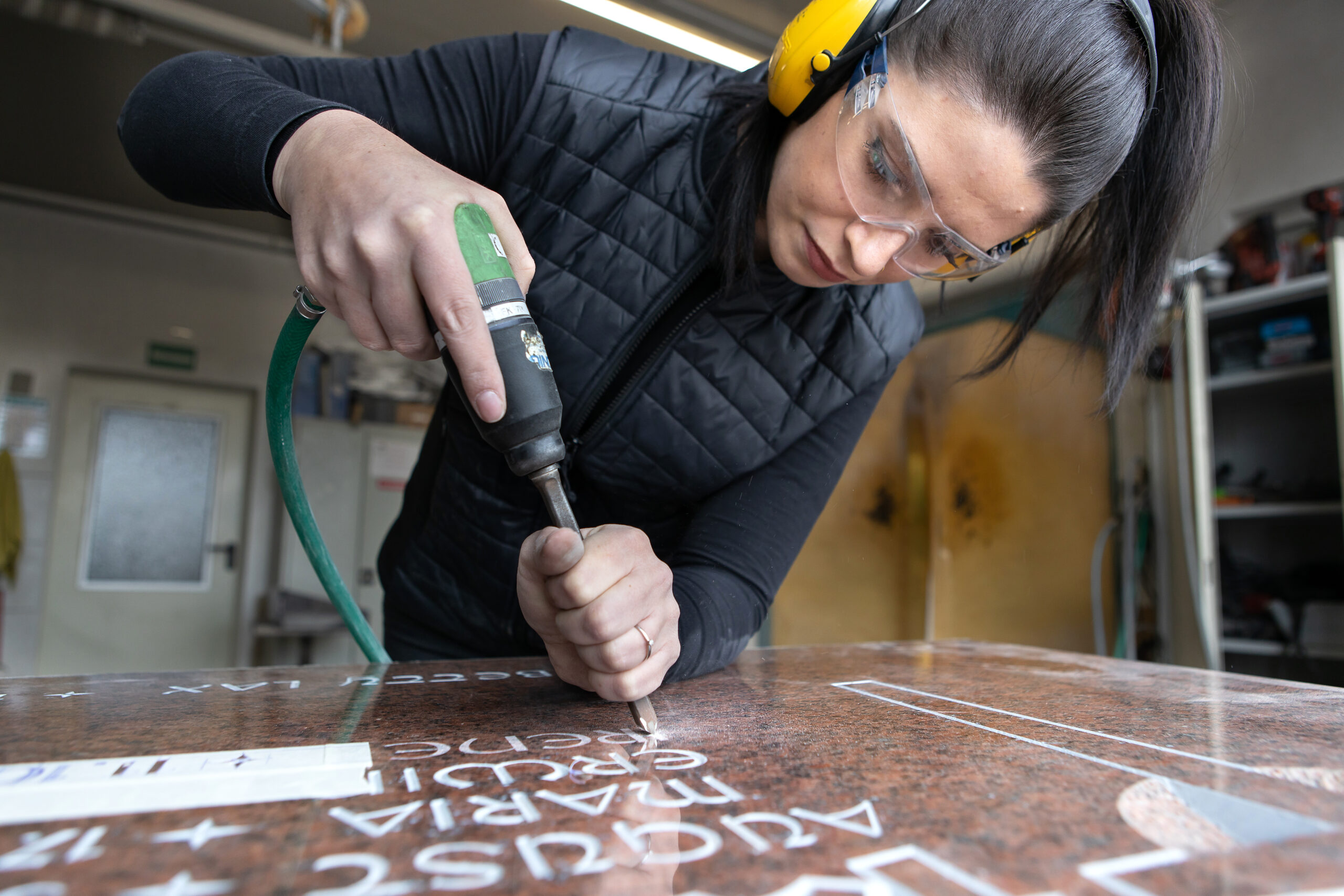At HAIX, shoemaking is a manual craft. This is how we guarantee the high quality of our products. Step by step, we turn leather, textile, rubber and steel into footwear. Our production team consists of experienced, long-standing employees and young colleagues in training. They learn our trade from the ground up.
An insight into the production can be found in the video:
Cutting table
On the cutting table, various materials such as textile or leather are cut with millimeter precision. A projector casts the cutting pattern directly onto the material; the machine makes the cut automatically.
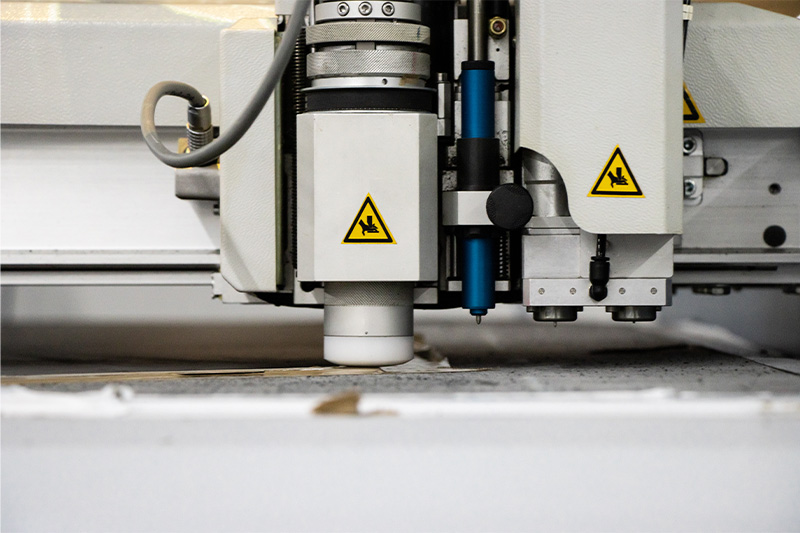
Stitching Workshop
Our long-standing employees manually stitch the individual components of the shoes together. In the stitching workshop, Sandra attached the lining to the leather and the eyelets to the loops, seam by seam. A qualified dressmaker, she has worked in the HAIX production and repairs department for 33 years.
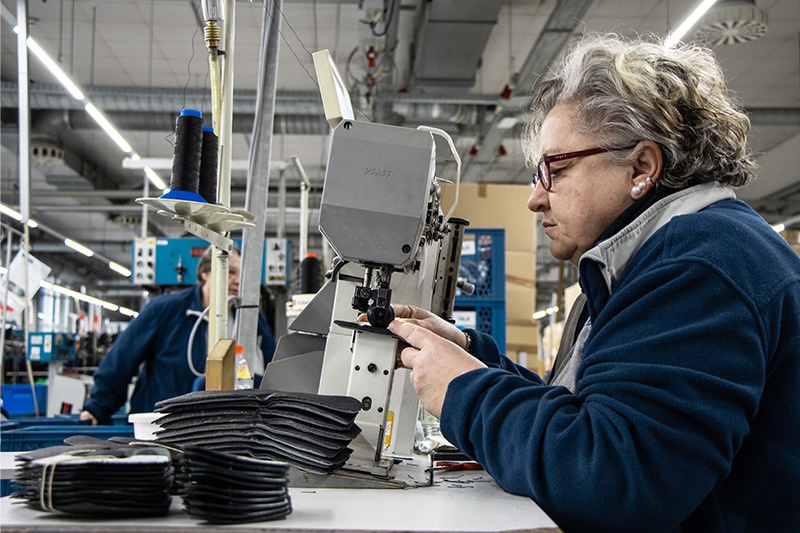
Fittings
The eyelets, hooks, and other metal parts are attached to the shafts before any further processing. The devil is in the detail: Everything needs to be exactly right to produce a tidy shoe.
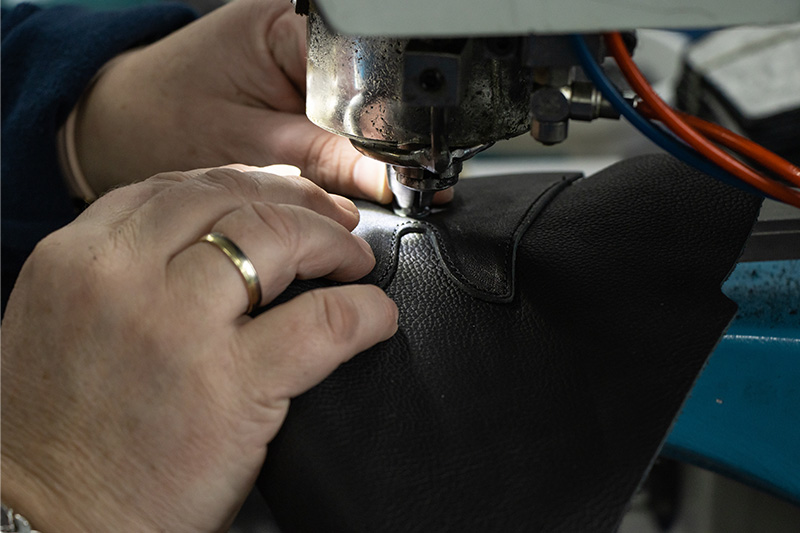
The finished shaft
A shoe consists of an astonishing number of little parts. Once the external materials, lining, and GORE-TEX membrane are stitched together, Anita turns everything into a finished shaft. She, too, is a trained dressmaker. Having worked for the HAIX production department since 1994, she brings nearly three decades of expertise to the table.
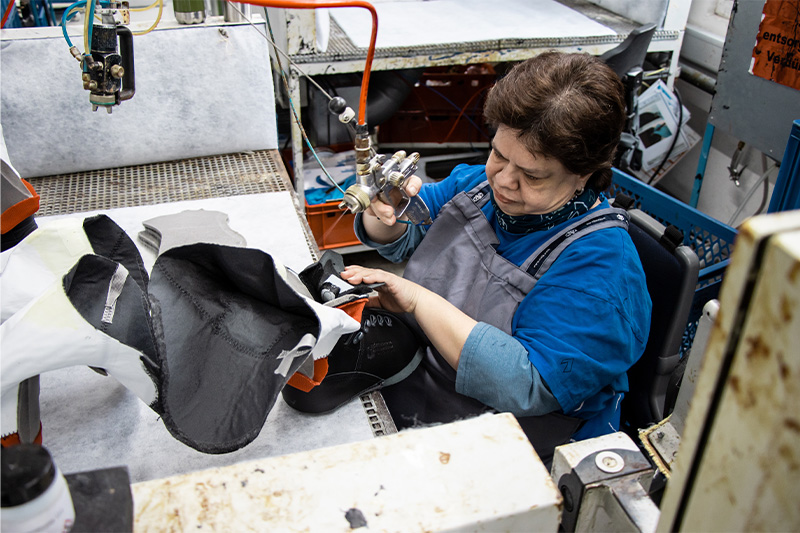
Lasts
The sole and shaft are made with a last to guarantee a perfect fit. This ensures that the sizing is accurate and that there is enough space left for a toe cap, for example. The insole is directly attached to the last. This step of the process, alongside many others, is Michael’s domain. As a production foreman, he is always there when something needs to be done. Michael has been a member of the production team for seven years. He also completed his apprenticeship here.
A shoe takes shape
It takes a lot of force and tension to shape the finished shaft and pull it over the last. To make the process a little easier, the shoe is put into a hot steam bath, which softens the leather. Afterwards, a machine sets the shape of the boot.
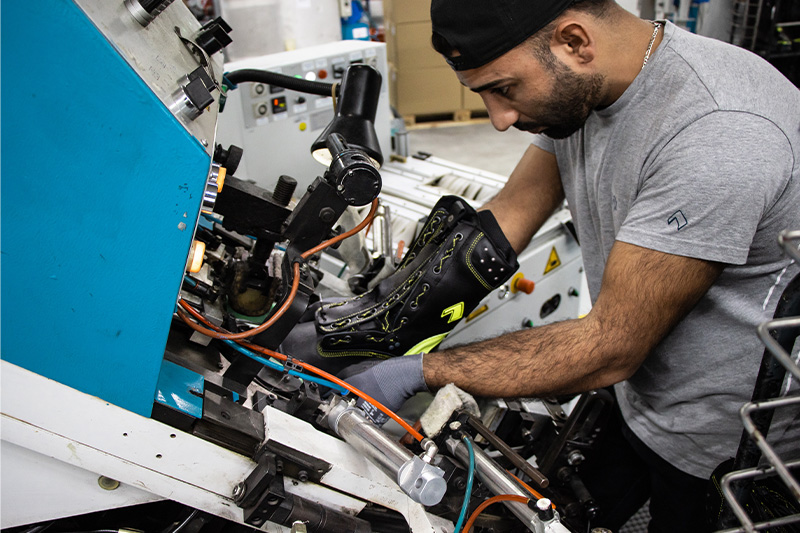
Toe caps
Safety shoes and boots come with toe caps. They are usually made from steel or carbon. Special glue is used to ensure that the lining and the outer material are securely attached to each other. A machine puts pressure on the tip of the shoe until the toe cap is firmly fastened.
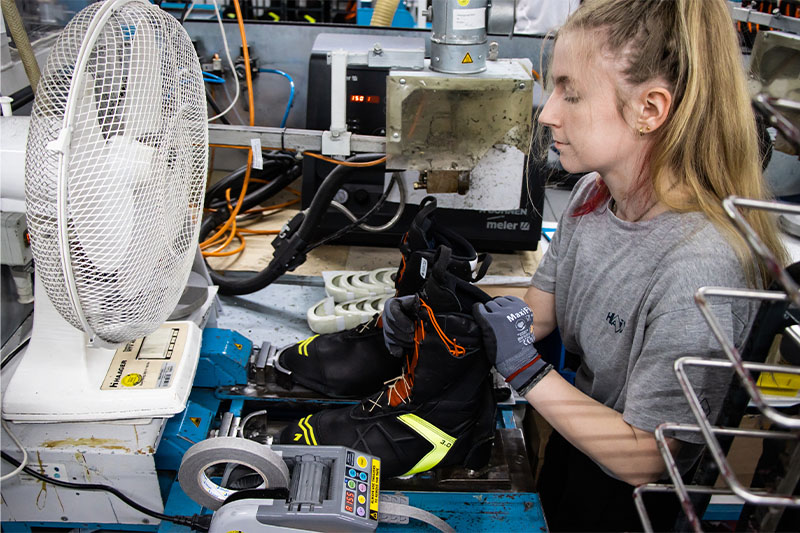
Gluing the insole
In the next step, the lining and the outer material are attached to the insole. The needles that were holding the sole in place are now removed. An employee manually inserts the shoe into the machine before metal rails firmly press the edges of the shaft onto the sole.
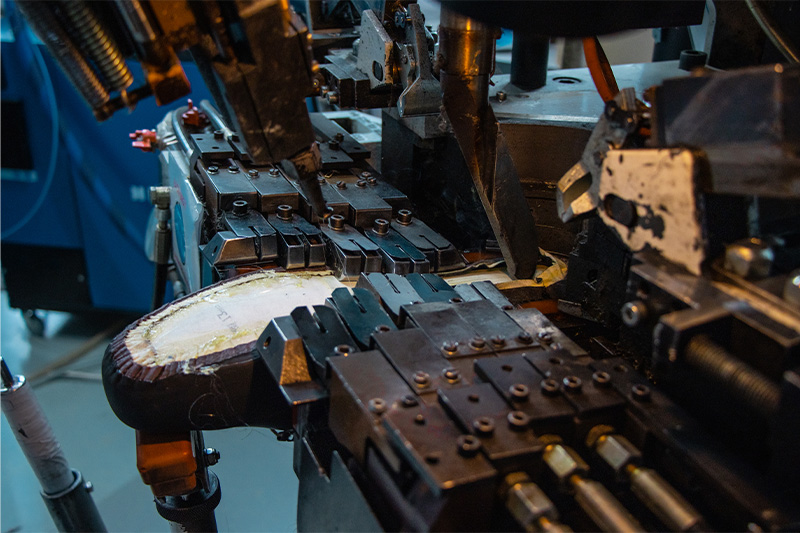
Hot Melt
Even the best GORE-TEX membrane is useless if the sole isn’t waterproof. A membrane on the sole is not an option, however, as it would wear out too fast. Our solution: Hot melt. Hot glue, combined with a waterproof base material, seals the bottom of the shoe. This protects the sweat-wicking function of the insole while ensuring that the shoe is completely waterproof.
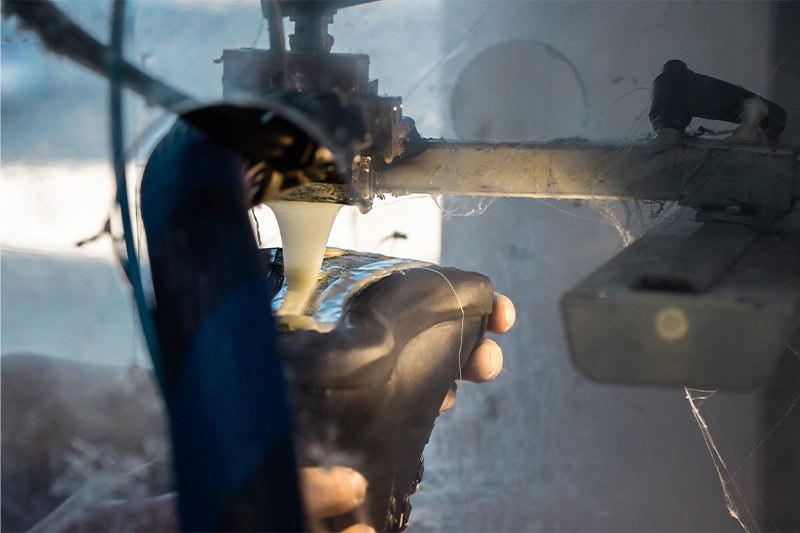
Roughing
The material of the shoes is roughened at various steps of the manufacturing process. This improves the adhesive strength of the glue. Here, you can see Michael roughing a rubber sole. He has been with HAIX for eight years.
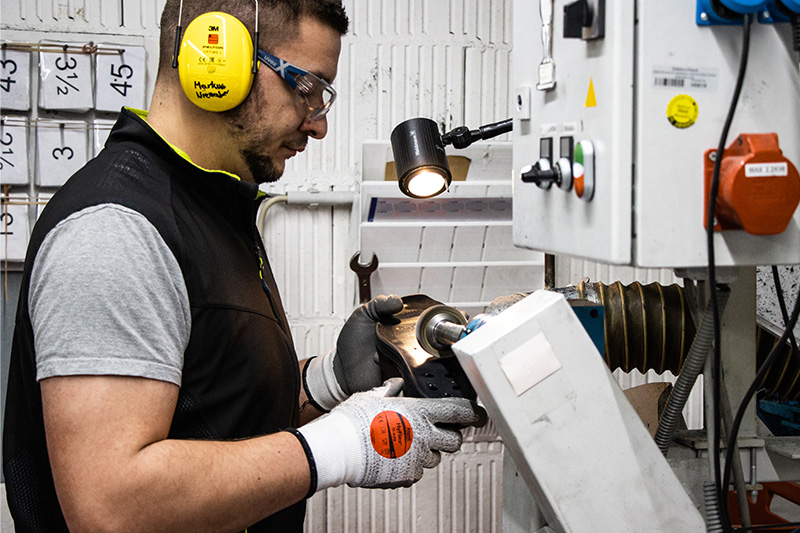
Taping the edges
While functionality is key, our shoes also need to meet high visual standards. An employee is using masking tape to mark where the glue goes to make sure that there won’t be any visible edges once the rubber sole has been attached.
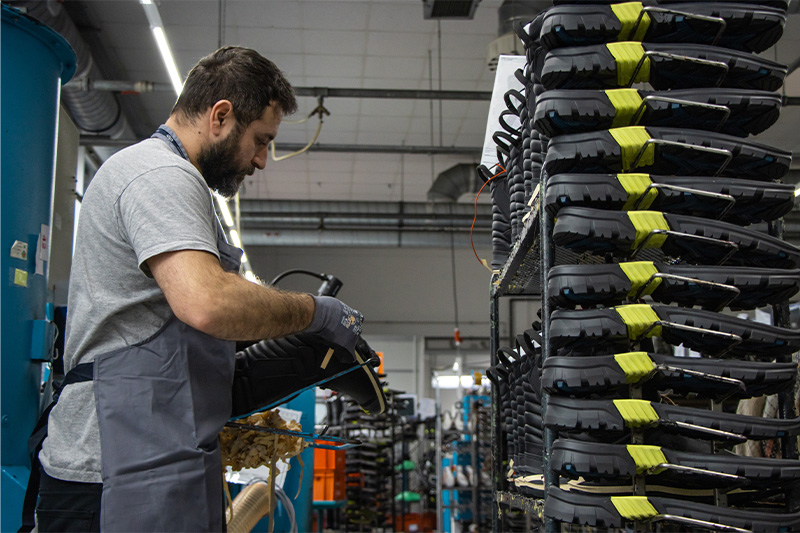
Extra strong Glue
Sanije covers the shafts and rubber soles in an extra-strength glue to ensure that our boots last – even in tough conditions. Her every move is fast and precise.
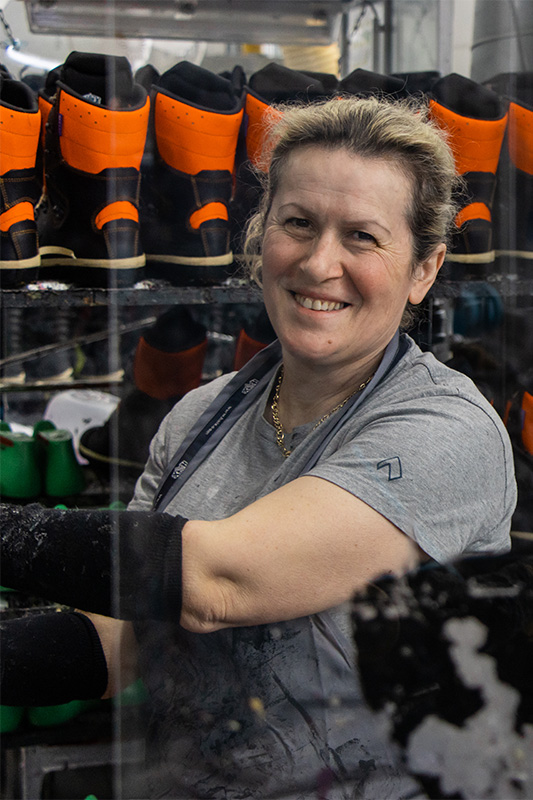
Rubber sole
Intense heat activates the glue on the shaft and sole. Shuguri then presses the two components together with considerable force and precision. Finally, he inserts the shoe into a machine that continues to exert pressure until the rubber sole is firmly attached.
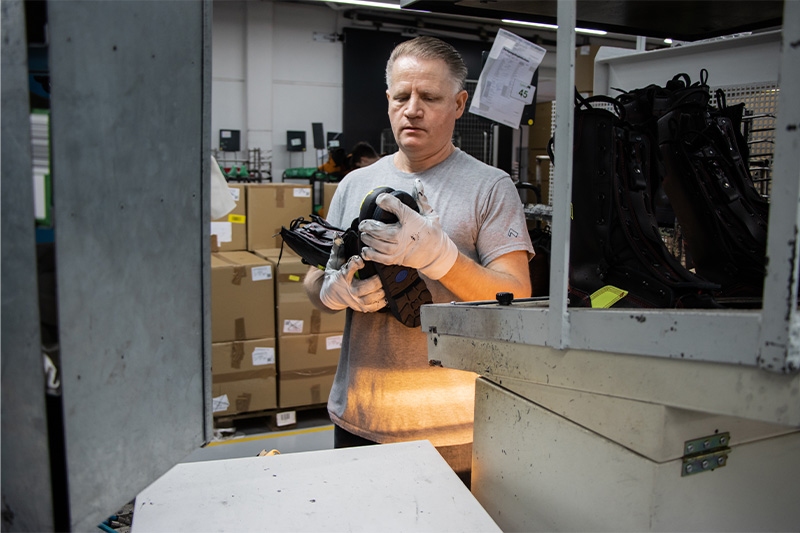
Details are important
Anne-Marie has been working at HAIX for 36 years. She usually works as a seamstress but often helps out in the logistics department. Sometimes, she takes care of the finishing touches: After all, what’s a firefighter boot without laces? Anne-Marie skillfully threads and tightens the laces at an impressive pace.
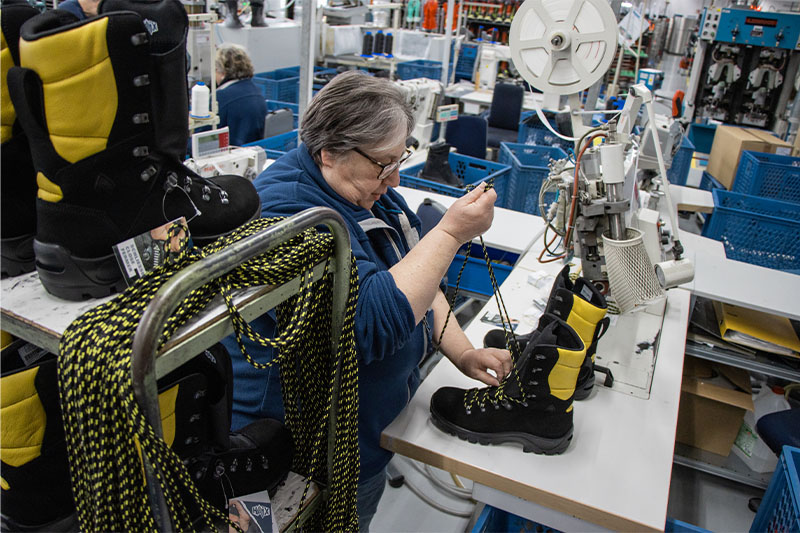
Packaged by hand
Manual work from start to finish: Nexhat has been a part of HAIX for 19 years. He puts the finished pairs of shoes, wrapped in tissue paper, into the corresponding boxes and adds the right information booklet to each box. After every box, he pushes a red buzzer to count the finished pairs. On an average day, he boxes between 400 and 500 pairs of shoes.
